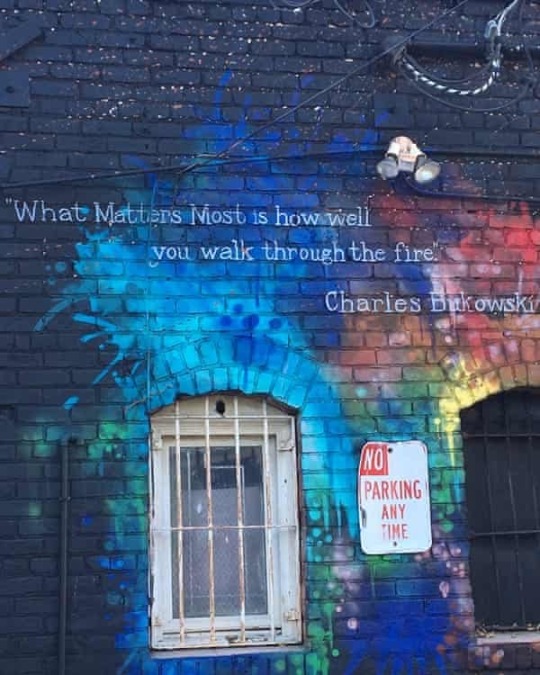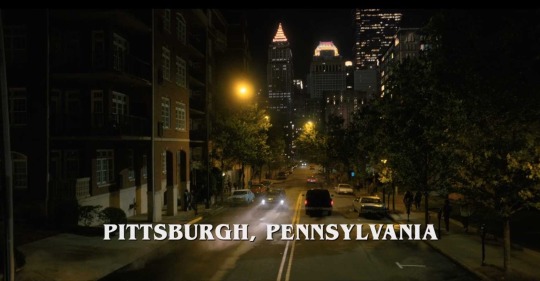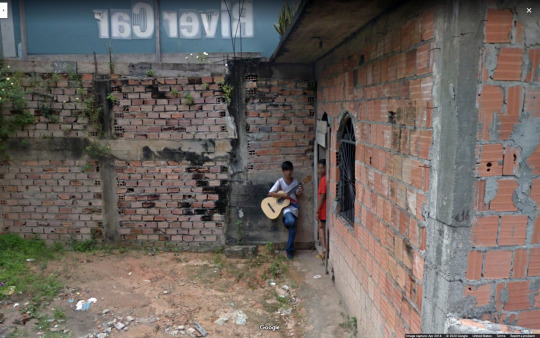Text
set the scene before your eyes — Aristotle
6 notes
·
View notes
Text
Art will give you crowns in heaven and laurels on Earth, but also, it will tear your heart out and leave you lonely. You'll be a shanda for your loved ones. An exile in the desert. A gypsy. Art is no game! Art is dangerous as a lion's mouth. It'll bite your head off. — Uncle Boris, The Fablemans
#art#crowns#heaven#laurels#earth#tear#heart#shanda#desert#gypsy#dangerous#lion’s mouth#uncle boris#the fabelmans#bite
5 notes
·
View notes
Text
Just wanted to make a note of this:
Cosmo D of Newcleus posted the equipment they used to make their records in the ‘80s. As a young kid, that early electro/old skool hip hop blew my mind, ‘cause I had no idea what a drum machine or synthesizer was.
Cosmo D on the Electro Empire forums:
Newcleus - ELECTRO EMPIRE - Home of Electrofunk
QUOTE:
Thanks Craig.
Yes, Chilly B and I wrote and played everything (except on "Where's The Beat" and for those annoying Synth Drums on "I Wanna Be A B-Boy"). We drew our influences from all over, Jazz, Funk, New Wave, Disco... plus we started out as a street DJ crew in the '70s so we were basically Hip-Hop in it's rawest earliest form. I would say that our chief influences were P-Funk, DEVO, Gary Numan, Jean Michelle Jarre, and of course Kraftwerk. We probably borrowed most from P-Funk and Kraftwerk, but we didn't try to sound like them.
Here’s an instrument list:
Let's see...pre Jam-On Revenge album ("Jam On Revenge" and "Jam On It"):
Sequential Circuits Pro One
Roland RS09
Roland TB-303
Roland TR-808
Electro Harmonix Vocoder
Jam-On Revenge album:
Sequential Circuits Pro One
Roland RS09
Roland TB-303
Roland TR-808
Roland SH-101
Roland Juno 60
Oberhiem DMX
Electro Harmonix Vocoder
Pre Space Is The Place Album ("Drunk Driving", "Dynamic"):
Sequential Circuits Pro One
Roland RS09
Roland TB-303
Roland TR-808
Roland SH-101
Roland Juno 60
Roland JX-3P
Roland MC-202
Roland SVC-350 Vocoder
Space Is The Place Album:
Sequential Circuits Pro One
Roland RS09
Roland TB-303
Roland TR-808
Roland SH-101
Roland Juno 106
Roland Jupiter 6
Roland MC-202
Roland MSQ-700
Roland TR-727
Yamaha RX-11
Yamaha QX-1
Yamaha DX7
Yamaha DX9
Casio CZ-101
Ensoniq Mirage
Roland SVC-350 Vocoder
0 notes
Text
In 1996, Jeff Buckley did an anonymous coffeehouse tour performing solo under a different pseudonym each night. I only heard about it years later. Pittsburgh was on the list, the infamous Beehive Coffeehouse in Oakland, but it was the only show that was cancelled. I vaguely remember an interview with his tour manager, whom he did the tour with, saying it was cancelled due to weather. I was trying to remember the name he was gonna use, but couldn’t: the Halfspeeds! Luckily I found a scrape of an old website mirrored somewhere, the only mention I could still find on the web of that cancelled show.
*December 1996 / Solo Phantom Tour - "2 guys in a car with a guitar"
Day: Date: City: Venue: Assumed Names:
Fri 6-Dec "Westborough, MA" Old Vienna The Crackrobats
Sat 7-Dec "Boston, MA" Kendall Square Possessed by Elves
Sun 8-Dec Day Off
Mon 9-Dec "Buffalo, NY" Spot Coffee Father Demo
Tue 10-Dec "Cleveland, OH" Barking Spider Smackrobiotic
Wed 11-Dec "Pittsburgh, PA" Beehive [CANCELED] The Halfspeeds
Thu 12-Dec "Philadelphia, PA" La Tazza Crit-Club
Fri 13-Dec "Baltimore, MD" Ze Bean Topless America
Sat 14-Dec "Washington, DC" Misha's Martha & the Nicotines
Sun 15-Dec "Washington, DC" Soho A Puppet Show Named Julio
Most of these venues are gone, such is the fate of indie venues. Spot Coffee is still in Buffalo, this would have been the original location on Chippewa & Delaware, which opened in ‘96. There’s a bootleg of that set called ‘Father Demo’. Kendall Square isn’t a venue, but a neighborhood, but the former Kendall Cafe at 233 Cardinal Medeiros Ave, Cambridge, claimed Buckley. Misha’s is still around in Alexandria, VA, but has moved locations. I actually used to drive down & hang at Soho Tea & Coffee in DuPont Circle, DC in the 4-5 months I was in DC for a design contract.
#1990s#jeff buckley#beehive coffeehouse#Pittsburgh#oakland#spot coffee#buffalo#alexandria#DuPont circle#misha’s#Kendall square#soho tea & coffee
4 notes
·
View notes
Text

34 notes
·
View notes
Text
You can only be independent of God while you’ve got youth & prosperity. — Aldous Huxley
3 notes
·
View notes
Text

Eddie Van Halen at his 5150 Studios in 1984.
20 notes
·
View notes
Text
THE Talkbox FAQ
There have been some other websites who have stolen my original Talkbox FAQ that I wrote back in 2007-2008, with no credit to me…So I thought it was about time that I repost it myself, since my old site no longer exists.
Here is the OFFICIAL Moot Booxle Talkbox FAQ.
MooT BooXLe’s TALKBOX FAQ
1. What is the purpose of this FAQ?
2. What is a talkbox?
3. Is a talkbox the same as a vocoder?
4. What is a talkbox driver?
5. I built a “ghetto talkbox”. Why doesn’t it work very good?
6. It’s easier and cheaper just to buy a talkbox, right?
7. What kind of driver do I need for building a good talkbox?
8. How loud should I play my talkbox?
9. What is the proper length of tubing?
10. What is the proper size of tubing?
11. How should I position the tube in my mouth?
12. How come my words aren’t clear?
13. What kind of tone do I need for my keyboard?
14. Do I have to have a Yamaha DX100?
15. If the sound comes from the tube, why do I need a microphone?
16. Will playing the talkbox damage my mouth or dental work?
17. Can you teach me how to play “California Love”?
___________________________________________________
1. What is the purpose of this FAQ?
The purpose of this FAQ is not to necessarily dictate what’s right and wrong about the talkbox, playing the talkbox, etc. but instead to provide some good general information. Over the past year, I have received dozens, if not hundreds, of emails asking a lot of the same questions. My intent is to make a document that people can refer to that should answer most, if not all, of those questions.
2. What is a talkbox?
Let’s start with the basics. A talkbox is not really an instrument in and of itself; however, it requires such skill that it can almost be classified as such. A talkbox is a sound modifying device that uses the human vocal cavity - not the human voice - as its controller. When a sound is fed into a talkbox driver, that sound travels through an airtight vinyl tube which is placed in the performer’s mouth. The shape of the sound can then be modified by the performer by moving his or her mouth and throat as if he or she were singing or talking. Some performers have perfected this to such a high level that very clear and distinct words and phrases can be heard - all with the tone and pitch of the instrument being played. Notable among them are Roger Troutman (some, including myself, still consider him the best!), Jeff Beck, Peter Frampton, Pete Drake, Stevie Wonder (briefly), Byron Chambers, Teddy Riley, Joe Walsh, etc.
3. Is a talkbox the same as a vocoder?
While they may seem similar, the answer is NO. True, both can make ‘talking synth/guitar’ sounds, but they are are two completely different animals.
A vocoder is an electronic device that consists of a network of tuned bandpass filters, each one connected to an envelope follower. It requires two input signals - a “carrier” and a “modulator”. The “carrier” signal would be your guitar, keyboard, or whatever else (sometimes it’s fun to use a drum machine!), and the “modulator” in this case would be your voice talking/singing into a microphone. The different frequencies in the sound of your voice pass through the bandpass filters, which trigger the envelope followers to let the sound of the “carrier” through in that frequency range. The result is that the “carrier” now has the characteristics of your voice - the “modulator”. Sounds complicated….probably because it is. Hardware vocoders, especially the higher-quality ones, can be quite expensive.
A talkbox, on the other hand, is very simple and relatively inexpensive. It relies on basic physics rather than complicated electronics, and is no more complex than a guitar amplifier. Rather than actually talking or singing into a microphone to modify the instrument sound, with a talkbox, the instrument sound is directly injected into the mouth. This natural physical phenomenon makes the talkbox capable of much richer and more realistic vocal sounds, whereas the vocoder is better at special effects and robotic vocal sounds.
4. What is a talkbox driver?
When somebody refers to a 'talkbox driver’, what they mean is a horn driver, also known as a compression driver. This is a common PA speaker part. Most full-range PA speakers consist of at least one woofer (usually between 10" and 15" in size) and a horn, which handles the mid to high frequencies. If you were to take this speaker apart, you would see a compression driver attached to the back of the horn - which just screws on to the throat of the driver. For talkbox use, there are several models (which I’ll mention later) that are preferred. Not just any horn driver will give a good result - it all depends on the frequency response and power handling of the driver.
5. I built a “ghetto talkbox”. Why doesn’t it work very good?
Oh boy. You had to go asking that question. Well…..the biggest reason that a “ghetto” talkbox will never sound as good as the real thing is because it does not use a real horn driver - the key component of a “real” talkbox. Is it fun to build? Oh yeah! Because you probably have most of the parts lying around your house! Does it sound good? Probably not. Can it sound good? Not really. The way I made mine sound decent on the videos was through a ton of post-processing (EQ and compression). Straight out,
it certainly does not sound that good! You are most likely going to get a weak-sounding talkbox that leaks sound very badly - no matter how tight you tape or seal it! The only way to get a completely airtight seal is to use a horn driver, period.
6. It’s easier and cheaper just to buy a talkbox, right?
Easier, yes. Cheaper, not at all. You can certainly build a talkbox, including amp, driver, tubing, connectors, and wire, for less than it costs to buy a good pre-made talkbox.
However, if you don’t want to spend the time and effort, and want a decent pre-made box, I have a couple of suggestions. First of all, stay AWAY from the Danelectro Free Speech. There are about a million reasons why this is the worst talkbox in history, starting with the special tube design that only sort of works. Also, there is really no need to go for a 'Supertalker’ talkbox, as those use MCM drivers which can be bought for less than $40 USD! The only thing that makes them nice is the custom tube connectors, but last time I checked, they actually sell those separately.
I would recommend the Framptone talkbox, endorsed by Peter Frampton, but you pay an awful lot for the name. Not necessary.
The Heil sound talkbox is pretty decent, but there are drivers out there that are certainly better.
The one to go for, especially for a beginner, is the Rocktron Banshee.
It’s self-amplified, self-contained, and has a pretty good sound. Great for starters.
7. What kind of driver do I need for building a good talkbox?
When shopping for a horn driver for use as a talkbox, there are a couple of things you should look for.
First of all, check out the frequency response. It needs to be a midrange driver - a high frequency driver will not work very well.
The low frequency response needs to be at least 600Hz or lower - I recommend much lower. Look for one that goes down to at least 250Hz. The aforementioned MCM driver (model DU-40) goes all the way down to 100Hz! The high frequency response may vary, but generally around 6-8kHz is fine.
The other thing to check out is the power handling - the wattage. About 40w is plenty - it’s not a good idea to use your talkbox at extremely loud volumes. If the driver can handle more than 40w, great. More headroom is not a bad thing!
You may also want to bear in mind the impedance (ohms) of the driver - most horn drivers are either 8 or 16 ohms. It’s always a good idea to match the impedance between your amp and driver.
Here are some of the driver models that are best for talkbox:
Electro-Voice 1823m (This is the classic 'Golden Throat’ driver)
Electro-Voice 1824m (a smoother-sounding version of the 1823m)
MCM DU-40 (the best low frequency response!)
MCM 54-060 (the 60w version of the DU-40)
Pyle Pro PDS 772 (a nice clean-sounding driver)
Selenium D250-X
Monacor KU-516
8. How loud should I play my talkbox?
My general rule is, how loud can you sing or talk (not screaming)? That is about the maximum volume you should run your talkbox at, too. While it may not really hurt you to play it louder, remember that the human mouth and throat were only designed to handle a certain amount of sound pressure. Putting something that sounds like a jet taking off in your mouth is not a good idea!
Playing the talkbox at low volumes is ok to do, but you may find that you can’t really make certain sounds until you open the driver up more - so put a decent volume through it! Also, when recording, talkboxing at low levels can make your mouth noises more obvious.
9. What is the proper length of tubing?
There really is no rule here. In my opinion, shorter is better, because it allows more sound pressure to reach your mouth from the driver. You may find that very long tube lengths reduces the effectiveness of your talkbox, making you have to turn the volume up, and adjust the EQ of your amp to have a more robust sound. The bottom line is, use only what is necessary to get the sound from the driver to your mouth, with the talkbox sitting on the floor.
10. What is the proper size of tubing?
Once again, there really is no rule, but the two sizes that are most commonly used (and the only two sizes that I recommend ever using) are:
5/8" O.D. (outside diameter) and ¼" O.D.
The most common size is the ¼" OD, and that is what I recommend to beginners - it is easier to get clear diction with that size of tube in your mouth. In the US, you should be able to find WATTS plumbing parts at any home supply store. Get the yellow color-coded tubing. Buy plenty - you will always want to have extra, because it’s a good idea to change out your tubing once in awhile.
The larger size, 5/8" OD, is nice for a fatter tone, because more air goes through the tube, and just the physics of a larger column of air yields a slightly different harmonic balance. I find this size harder to talk with, but after some practice it becomes more natural.
Find which size works for you, and get comfortable with it!
Another note about tubing: don’t use the cheapo tubing that is used in commercial drink machines. My friend DJ Mpact found this out the hard way! The cheaper, more flexible vinyl tubing tends to transfer vibrations much more intensely, which could result in an intense headache!
Use nice quality plumbing-grade vinyl tubing.
11. How should I position the tube in my mouth?
There is no rule about which side of the mouth to use, but most tend to go for the left side, which is what I do. Hold the tube gently between your molars, biting it ever so slightly so it doesn’t slip out of your mouth, but not so hard that it chokes off the sound coming through it. You may have to angle it a bit away from or toward your cheek, depending on your mouth shape. Some trial and error is involved here, just changing the position and seeing what works. Once you find the right position, you will be surprised how quickly it becomes instinct to put the tube in your mouth in that spot.
12. How come my words aren’t clear?
There are many reasons for this. It could be that the tone you are getting from your keyboard or guitar is not bright enough - that is, not rich enough in harmonics. The brighter and 'buzzier’ the tone coming into the driver, the easier it is to sound clear with the voice - in most cases. This would mean that if you are playing guitar, adding a little distortion and using the bridge position pickup; with a keyboard, use a bright, harmonic sound such as a sawtooth - this is addressed in detail in question 13.
The biggest reason why words aren’t clear is bad tube placement, bad pronunciation, and not adding in the consonant sounds.
Try whispering the words “take a break”, but do it without actually exhaling any air. Notice something? The only sounds you hear are the ’t’, 'k’, and 'b’. This is because those consonant sounds are not made by your voice or breath - they are made by your lips and tongue
8 notes
·
View notes
Text

Keytar goals. Lady Gaga on her 28th birthday at the Roseland Ballroom.
11 notes
·
View notes
Text

Prince’s Yamaha DX7 synthesizer, complete with handwritten patch names. He used this on “When Doves Cry”, ‘Lovesexy’ & other records in the ‘84–‘87 period. He sold it to his engineer Shane T Keller in 1995, in the middle of his feud with Warner Bros. to raise cash to tour Japan. Keller auctioned it off in June 2020 for $73,697. I’m actually kinda bummed this isn’t at Paisley Park as part of their permanent collection. Very few of Prince’s instruments made it out to the wild, so they catch crazy numbers when auctioned.
56 notes
·
View notes
Text

Sly Stone in the studio, 1975.
7 notes
·
View notes
Text
If I had a dime every time that you crossed my mind. / Well I'd basically be sitting on a big ass pile of dimes.
Maren Morris “Rich” (2018)
1 note
·
View note
Text

I liked how Stranger Things S2 starts with a composite shot of Pittsburgh.
8 notes
·
View notes



